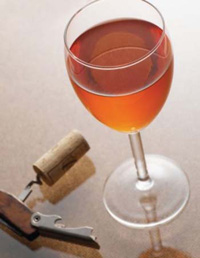The Rosé Revolution
Oenophiles no longer look down their noses at pink wines
 As a fan of rosé wines, I am both excited and encouraged to see that pink is hip. There was a time in the not so distant past when ordering a glass of pink wine in public would induce gasps of horror and that sneering “how could you” look of sheer disbelief and downright disgust from those around you. But not anymore!
As a fan of rosé wines, I am both excited and encouraged to see that pink is hip. There was a time in the not so distant past when ordering a glass of pink wine in public would induce gasps of horror and that sneering “how could you” look of sheer disbelief and downright disgust from those around you. But not anymore!
Thankfully the legions of closeted rosé lovers have been liberated and we now proudly and publicly sip pink. What once appeared to be a mere trend, a fleeting acceptance of pink by wine hipsters, seems to have turned into a full-blown rosé revival, and I for one am ecstatic. Apparently many who once feared them have discovered that all rosé wines are not created equally and therefore should not be unfairly judged and lumped into one category, but rather treated as the individuals they are.
There are several common traits among pink wines; most are predominantly made from red grapes, are best when consumed young, offer red fruit flavors and aromas and should be served chilled. But, it’s the differences (region of origin, production technique, grape type) that distinguish the really good ones from the not so good ones.
Practically every wine-producing region makes rosé but some much more successfully than others. Southern France is probably the most recognized and highly touted for producing fine-quality rosé wines, followed by California, Spain and Italy. The best rosé-producing areas in France include Tavel in the Rhône Valley, Loire Valley, Marsannay and Provence, and the most commonly used grapes in France are Pinot Noir, Grenache, Cabernet Franc and Gamay. Many exceptional examples come from Spain, where the main grapes used are Tempranillo and Granacha (Grenache), while Italy tends to use a host of indigenous grapes that include Nebbiolo, Montepulicano, Barbera and Trebbiano, to name a few. Pink wines from California are most often made from Pinot Noir, Grenache and, of course, Zinfandel.
Speaking of Zinfandel, one of the main reasons rosés receive such a bad rap is the common misconception that all pink wines are sweet like White Zinfandel. In fact, true rosés are quite dry. Another belief is that simply blending red and white wines makes pink wine, and while this method is used, it does not afford the most favorable outcome. A true rosé typically undergoes the same winemaking technique as do red wines, but the process is stopped before too many red wine qualities, namely color and tannins, are extracted. Allowing the clear grape juice to come into contact with the red grape skins for a limited time is what creates the beautiful pink hue.
As the summertime heat gradually gives way to crisp, cool fall days (later rather than sooner in New Orleans), rosés are the ideal transitional wines, as they offer the refreshing qualities of a white wine married with the bouquet and flavor profile of a red. Unique and distinct, rosés vary greatly in style, from delicate pale pink, light and fruity to nearly purple in color with medium body and firm tannins. At their best, they are delightfully crisp and fresh, with aromas and flavors reminiscent of red berries and impeccable balance and are a great value with most costing well under $20 per bottle.
Rosés are the ideal party wines as they pair well with a wide variety of foods, from spicy Asian to grilled zucchini, and tend to satisfy both red and white wine drinkers. At a recent tailgate party, I popped a cork on a bottle of dry rosé from California, and it was an impeccable match with the smoky, flavorful barbecue chicken and ribs that were served. Try serving a rosé with passed hors d’oeuvres, traditional picnic fare of sliced meats and cheeses, Sunday dinner of baked ham or pork loin and even local classics such as barbecued shrimp, jambalaya and seafood gumbo.
Suggestions
Chateau d’Aqueria Tavel
Bright and lively with ripe flavors of raspberry and cherry and a hint of spice, it is crisp and zesty with refreshing acidity, good fruit flavors and a long, dry finish.
Domaine Chandon Pinot Noir Rosé
Beautiful aromas of cherry blossom and lime zest precede mouth-watering fresh fruit flavors of strawberry and cherry. Light and fruity, it offers great balance and a long, refreshing finish.
Domaine Tempier Bandol Rosé
An exquisite example of dry rosé at its finest, this delicious wine exudes beautiful aromas of strawberries and rose petals. Delightfully crisp and bone dry, with great structure and a long, pleasing finish.
Menage a Trois Rosé Folie a Deux
This unique blend of Merlot, Syrah and Gewurztraminer emits lovely scents of candied fruit and ginger spice. It is packed with ripe strawberry and raspberry flavors accented by exotic spice.
Chateau Bonnet Rosé
A blend of Cabernet Sauvignon, Merlot and Cabernet Franc, this rosé from Bordeaux is pale salmon in color with notes of white flowers, citrus and ripe red berries. It is rich and wellbalanced with a anis flavored finish.
Robert Sinskey Vin Gris of Pinot Noir
This hard to find wine has a lovely bouquet of red berries and wild flowers. Elegant and fresh with lively acidity, it offers ripe succulent flavors of cherry, melon and cranberry.
